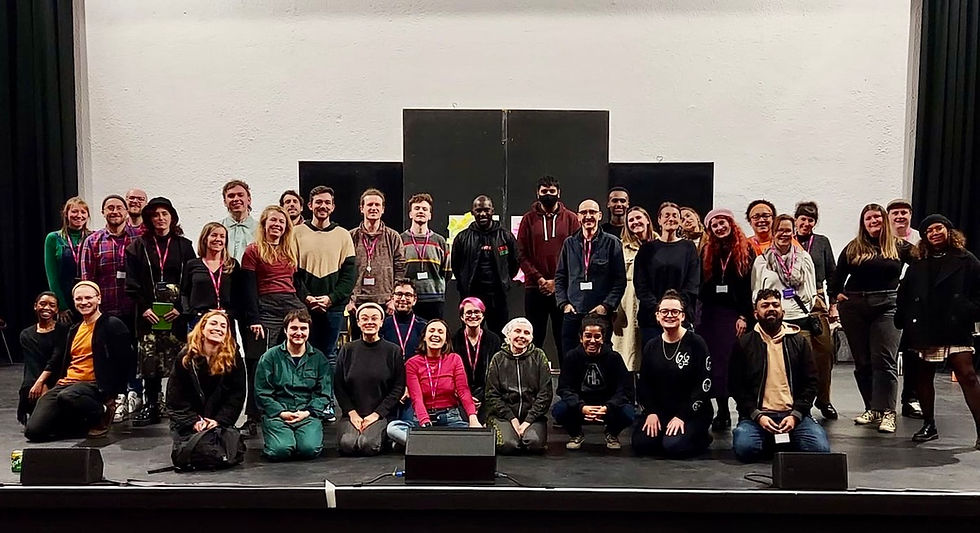Decisions, decisions
- Matt Fenton

- May 27
- 2 min read
In my twenties I programmed arts spaces to my heart’s desire (within tiny venue budgets), following my taste for performance, live art and dance, and my distaste for most theatre.
Franko B, Forced Entertainment, Station House Opera, Ursula Martinez, Hofesh Shechter, Benji Reid, Lone Twin, Miet Warlop, Kazuko Hohki, Quarantine, Tim Crouch, Odin, Burrows & Fargion, Candoco, Goat Island, 1927, Ockham's Razor, Taylor Mac, Henri Oguike, Faulty Optic, Frantic Assembly, Mat Frazer, imitating the dog, Marie-Gabrielle Rotie, Reckless Sleepers, Malika Booker, Herman Diephuis, Invisible Flock, Robin Deacon, Vincent Dance Theatre.

But around 2005, after 10 years of ‘shopping’ for great work, I became more aware of the limits of my worldview. Worse, when seeking greater diversity, the temptation was to ‘shop’ for culturally diverse or disability-led shows, defining artists by one element of their identities in problematic ways.
My response was to step back, stop programming, and devise ways that other people, often with no background in the arts, could have a go at deciding. My hunch was that greater diversity of decision-makers might bring about greater breadth of representation on stage. And that where, how and with whom you made the work would affect who came. To a large extent it worked. When local residents and artists made programming decisions, the audience changed and expanded. Shows were no longer contained by the building, specialists from all walks of life and non-professional performers were at the heart of commissioning new work, and the programme moved a long way from the tastes and interests (the so-called ‘vision’) of one person.
That path led me to Contact in Manchester, which had already been working in radical ways with young people as decision-makers for over 20 years. And not just on the artistic programme, but young people in governance, business planning and staff appointments. This model is behind what many note as the remarkable youth and diversity of Contact’s audience – like everywhere else, its audience reflects its decision-makers. My horizon expanded, and my time at Contact saw youth representation reach 50% of the board of trustees, young curators deciding major commissions in partnership with Manchester International Festival, and successfully applying our youth governance model to Contact’s multi-million-pound building redevelopment.

Now I’m working with David Micklem to support other organisations committed to embedding greater staff, community and youth involvement in major decisions. This grows from my experience that decision-making is better shared and demystified; that it is more likely to be meaningful and long-lasting when its processes are authentic and inclusive. That the split between a management ‘deciding stuff’ behind closed doors and everyone else living with the consequences, is at the heart of so much strife and dissatisfaction in our workplaces.
You can find out more about our programmes of support, including better decision-making, here.


Comments